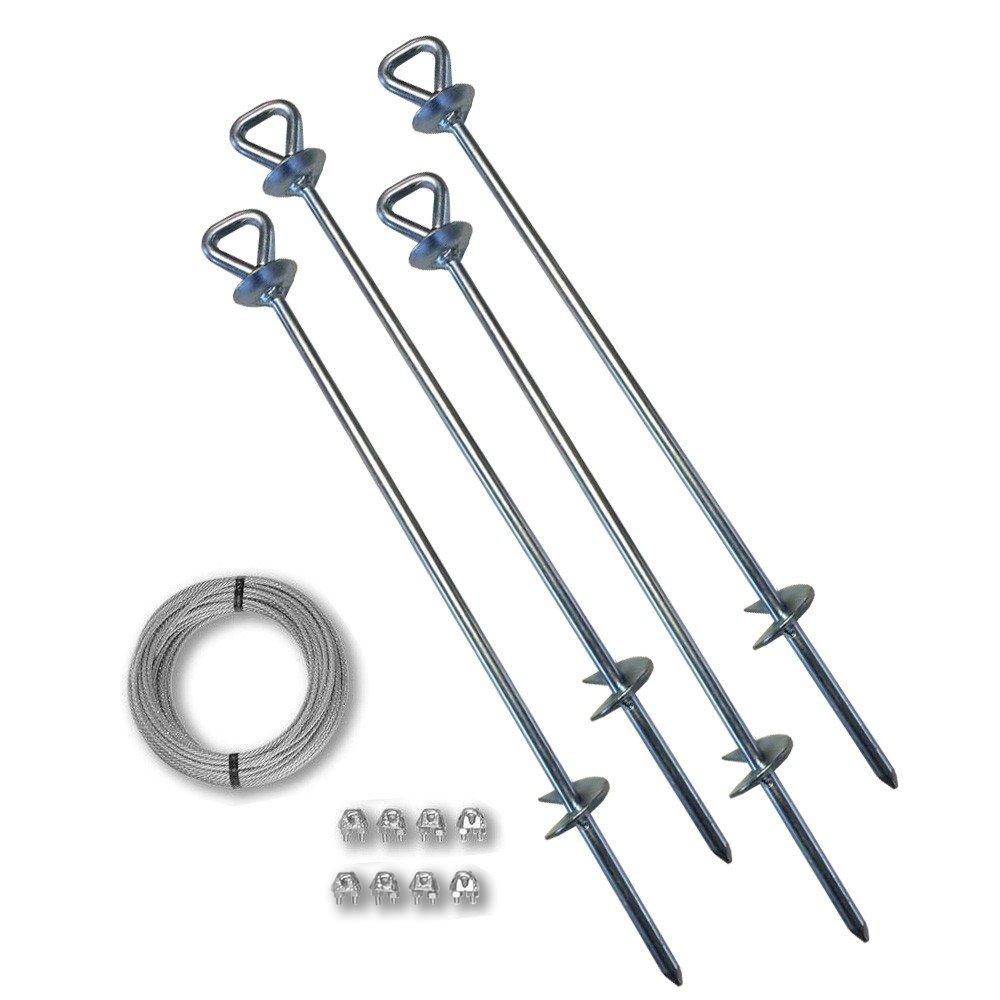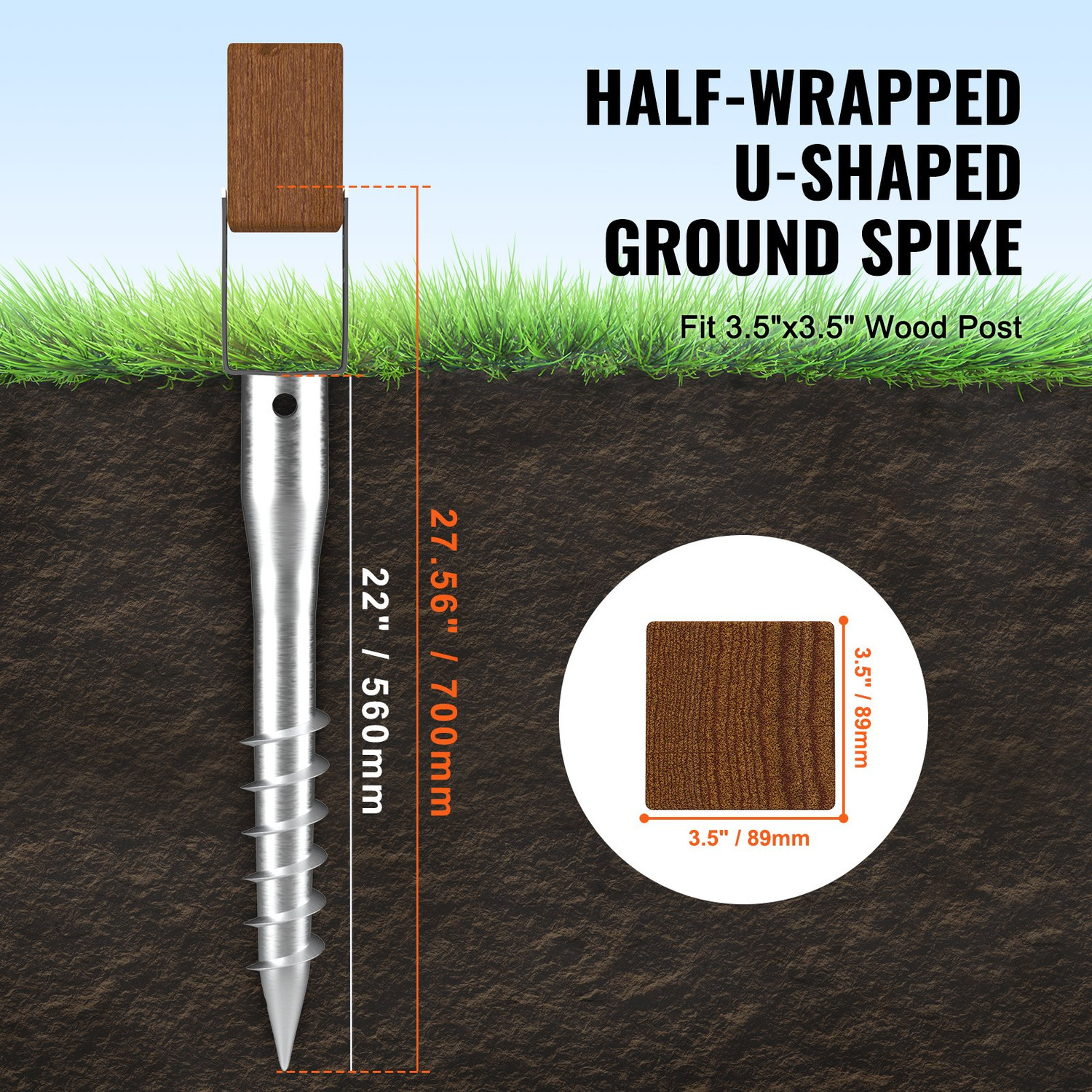Exactly How Heavy-Duty Earth Anchors Work: A Comprehensive Guide to Dirt Anchoring Solutions
Sturdy Earth anchors play a vital duty in offering stability and support in different construction applications. By installing deeply right into the ground, they withstand side and vertical pressures efficiently. Various sorts of anchors satisfy various soil problems, making them functional. Comprehending their technicians and installation strategies is vital for making best use of efficiency. What elements affect their efficiency, and exactly how do they compare to traditional techniques? The solutions may stun you.
Comprehending Heavy-Duty Earth Anchors
Sturdy Earth anchors function as vital parts in various building and landscape design tasks, giving security and assistance in challenging soil conditions. These anchors work by being installed right into the ground, where they stand up to vertical and lateral pressures. Their style permits safe and secure add-on to structures, ensuring they continue to be secured versus dirt activity or exterior loads.The performance of sturdy Earth supports largely depends upon the kind of dirt and the support's installment deepness. Correct setup strategies are crucial, as they figure out the support's holding capability. Environmental elements, such as moisture and freeze-thaw cycles, can also influence performance.These supports are often utilized in applications ranging from securing fences and preserving wall surfaces to maintaining momentary frameworks during negative weather. Recognizing the concepts behind heavy-duty Earth anchors is essential for specialists looking for to improve the toughness and safety and security of their tasks.
Kinds of Heavy-Duty Earth Anchors
Various sorts of durable Earth anchors are designed to fulfill certain demands based upon dirt conditions and task requirements. Helical anchors, including screw-like blades, are reliable in softer soils, supplying high lots abilities and very easy setup. Driven anchors, which are inculcated the ground, appropriate for rocky surfaces and provide instant tons assistance. Tie-back anchors are frequently made use of in retaining wall applications, permitting side assistance by anchoring right into the ground at an angle. Another kind is the cast-in-place anchor, suitable for concrete applications, as they are incorporated into structures for enhanced stability. Soil screw supports are flexible options that can be made use of in various dirt types, offering reliable tension and compression capacities. Each type serves distinctive applications, making sure security and security in building and construction and landscape design projects. Comprehending these alternatives allows for informed decisions in choosing the ideal Earth securing service.
The Mechanics of Dirt Anchoring

Recognizing the mechanics of soil anchoring calls for an evaluation of different kinds of Earth supports and their installation methods. Each support type provides special characteristics that influence its efficiency in various dirt problems. Correct installation techniques are essential for making the most of the securing system's security and performance.
Sorts Of Earth Anchors
Earth supports, important components in soil anchoring systems, been available in several types, each created for details applications and soil problems. One of the most typical types include screw supports, which are twisted into the ground, offering solid lateral resistance. Helical anchors include blades that enable for efficient installation in various soil kinds, making them ideal for both temporary and permanent applications. Driven anchors, typically made from steel, are inculcated the dirt and work in rough or dense environments. Auger supports use a helical style to assist in installation in softer dirts. Ultimately, plate supports include a flat plate hidden flat, distributing lots over a larger location, ideal for applications calling for high load abilities in natural dirts.
Installation Methods Described
Proper installment methods are vital for the performance of soil anchoring systems. The procedure commonly begins with website evaluation, validating the picked place can sustain the support's load. After figuring out the appropriate anchor kind, appropriate opening depth and angle should be established. The installation entails driving the support into the ground using specific devices, such as hydraulic or hands-on motorists, to accomplish finest embedment. Post-installation, tensioning the anchor is vital to assure security; this is commonly verified with load screening. In addition, surrounding dirt problems should be kept an eye on to stop displacement. Complying with these strategies not only enhances the anchor's efficiency yet also extends its life-span, providing trustworthy assistance for various applications.
Applications of Heavy-Duty Earth Anchors
While durable Earth anchors are often related to construction and landscaping, their convenience includes a variety of applications across different markets. In civil helpful hints engineering, they supply essential support for retaining walls, guaranteeing stability in locations vulnerable to dirt disintegration. The marine sector utilizes these anchors for securing docks and marinas, preventing movement brought on by currents and tides. Additionally, in the telecommunications industry, heavy-duty Earth anchors are substantial for stabilizing cell towers and other tall structures against wind forces. Agricultural applications also benefit, as these anchors can protect structures like greenhouses and animals secure fencing, guaranteeing they withstand harsh weather problems. In renewable power tasks, such as wind ranches, Earth anchors play an essential role in safeguarding generator structures, boosting general security and efficiency. This wide variety of applications highlights the flexibility and dependability of heavy-duty Earth supports across various areas.
Advantages Over Traditional Anchoring Techniques
Conventional anchoring methods have long been relied upon for stability, heavy-duty Earth supports provide significant benefits that improve performance and performance. One significant benefit is their remarkable load-bearing capacity, which permits them to withstand higher forces without failing. This strength makes them ideal for requiring applications, such as in building and construction and utility installations.Additionally, sturdy Earth supports are developed for much deeper installation, providing higher security in various soil problems, consisting of sandy or loose soils. Their resistance to rust and ecological factors guarantees a longer life expectancy and lowered maintenance costs compared to traditional methods.Moreover, these supports can be mounted with marginal disruption to the surrounding area, protecting the stability of the landscape. On the whole, sturdy Earth supports offer a trustworthy site link and effective option for anchoring demands, surpassing the constraints commonly connected with typical anchoring techniques.
Installation Process and Best Practices
The installment procedure for soil anchoring options starts with detailed preparation and website analysis to ensure peak efficiency. Following this, a detailed setup overview offers clear guidelines for effective execution (construction site anchors). Sticking to these ideal practices is vital for attaining reliable and lasting anchoring results
Prep Work and Website Assessment
Effective prep work and complete site assessment are vital actions in the installation of dirt securing services. Prior to setup, the soil kind have to be analyzed to determine its bearing capability and suitability for securing. Conducting a geotechnical study can supply crucial information about dirt structure, moisture degrees, and prospective ground activity. In addition, recognizing existing structures, plants, and energies is important to stay clear of interference throughout setup. The location must be removed of particles and obstacles to guarantee safe access for tools. Climate problems need to additionally be kept an eye on, as adverse problems can affect both safety and security and setup effectiveness. By meticulously preparing the site and evaluating all appropriate factors, the likelihood of successful support efficiency is considerably boosted.
Step-by-Step Installment Overview
A comprehensive installment procedure is vital for accomplishing ideal performance of soil securing options. The installation starts with picking the proper anchor kind and assuring the website is clear of debris. Next off, correct hole placement is identified based on tons demands. As soon as the location is established, openings are pierced to the specified deepness and diameter utilizing the correct devices. The anchor is then put right into the hole, making sure it is lined up properly. After protecting the anchor, dirt is backfilled and compacted to improve security. It is necessary to comply with manufacturer guidelines throughout the process. A post-installation assessment confirms that the anchors are adequately positioned and functioning as intended, offering trusted support for the desired application.

Maintenance and Evaluation of Earth Anchors
Routine upkeep and assessment of Earth supports are essential for guaranteeing lasting performance and stability. Routine checks enable the very early discovery of issues such as corrosion, loosening, or soil motion. Examiners ought to search for indicators of corrosion or degradation on the anchor components, click here for more particularly at the link points. In addition, the bordering dirt ought to be analyzed for erosion or modifications in moisture web content, which can affect anchor effectiveness.It is suggested to develop a regular assessment routine, ideally at least as soon as a year, depending upon environmental conditions. Throughout examinations, all visible elements should be cleaned up to get rid of dirt or particles that can hide potential troubles. Any indicators of distress, such as tilting frameworks or uncommon settling, should prompt immediate assessment. Appropriate documents of assessments can assist in monitoring support efficiency over time and help with timely maintenance actions, guaranteeing the anchors stay practical and trustworthy.
Regularly Asked Inquiries
What Products Are Heavy-Duty Earth Anchors Commonly Made From?
Sturdy Earth supports are usually constructed from durable products such as galvanized steel or stainless-steel, guaranteeing toughness and resistance to rust. These materials provide durable assistance and stability in numerous dirt conditions and applications.
Just How Do Soil Conditions Impact Anchor Efficiency?
Soil conditions substantially influence support performance. Variables such as soil kind, wetness content, and compaction influence the anchor's grasp and security, with cohesive dirts typically supplying much better resistance than loosened or sandy dirts, impacting overall efficiency.
Can Heavy-Duty Earth Anchors Be Reused After Elimination?
Heavy-duty Earth supports can be recycled after removal, given they are examined for damages and wear. Proper cleansing and maintenance improve their long life, guaranteeing reliable performance in succeeding installments when conditions permit for safe reinstallation.
What Are the Ecological Influences of Utilizing Earth Anchors?
The ecological impacts of utilizing Earth supports include prospective dirt disturbance, interruption of neighborhood ecological communities, and possible contamination of groundwater. Nevertheless, if used properly, their advantages frequently exceed these concerns, promoting security in various applications.
How Do I Select the Right Support for My Job?

Comments on “Expert Insights on heavy-duty earth anchors in Adverse Weather Conditions”